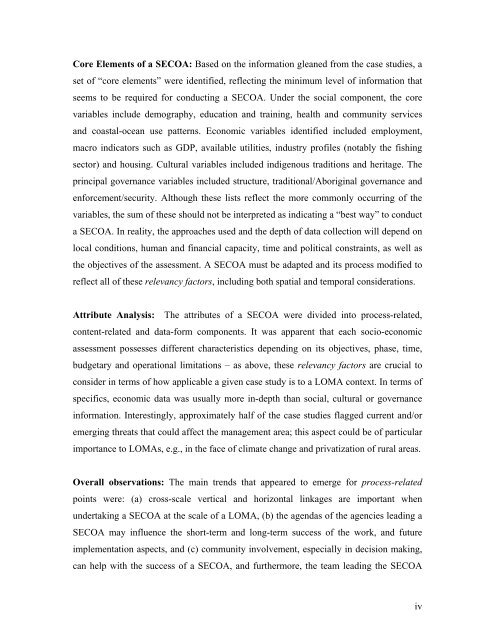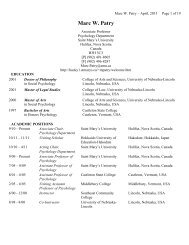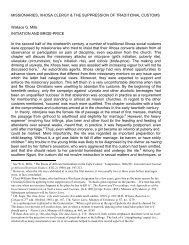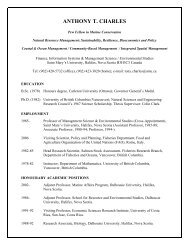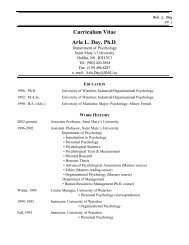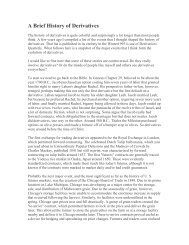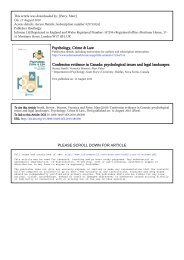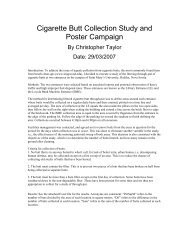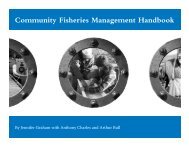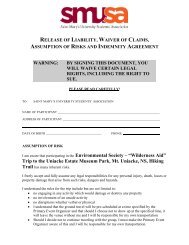Social, Economic and Cultural Overview and Assessment for Ocean ...
Social, Economic and Cultural Overview and Assessment for Ocean ...
Social, Economic and Cultural Overview and Assessment for Ocean ...
Create successful ePaper yourself
Turn your PDF publications into a flip-book with our unique Google optimized e-Paper software.
Core Elements of a SECOA: Based on the in<strong>for</strong>mation gleaned from the case studies, a<br />
set of “core elements” were identified, reflecting the minimum level of in<strong>for</strong>mation that<br />
seems to be required <strong>for</strong> conducting a SECOA. Under the social component, the core<br />
variables include demography, education <strong>and</strong> training, health <strong>and</strong> community services<br />
<strong>and</strong> coastal-ocean use patterns. <strong>Economic</strong> variables identified included employment,<br />
macro indicators such as GDP, available utilities, industry profiles (notably the fishing<br />
sector) <strong>and</strong> housing. <strong>Cultural</strong> variables included indigenous traditions <strong>and</strong> heritage. The<br />
principal governance variables included structure, traditional/Aboriginal governance <strong>and</strong><br />
en<strong>for</strong>cement/security. Although these lists reflect the more commonly occurring of the<br />
variables, the sum of these should not be interpreted as indicating a “best way” to conduct<br />
a SECOA. In reality, the approaches used <strong>and</strong> the depth of data collection will depend on<br />
local conditions, human <strong>and</strong> financial capacity, time <strong>and</strong> political constraints, as well as<br />
the objectives of the assessment. A SECOA must be adapted <strong>and</strong> its process modified to<br />
reflect all of these relevancy factors, including both spatial <strong>and</strong> temporal considerations.<br />
Attribute Analysis: The attributes of a SECOA were divided into process-related,<br />
content-related <strong>and</strong> data-<strong>for</strong>m components. It was apparent that each socio-economic<br />
assessment possesses different characteristics depending on its objectives, phase, time,<br />
budgetary <strong>and</strong> operational limitations – as above, these relevancy factors are crucial to<br />
consider in terms of how applicable a given case study is to a LOMA context. In terms of<br />
specifics, economic data was usually more in-depth than social, cultural or governance<br />
in<strong>for</strong>mation. Interestingly, approximately half of the case studies flagged current <strong>and</strong>/or<br />
emerging threats that could affect the management area; this aspect could be of particular<br />
importance to LOMAs, e.g., in the face of climate change <strong>and</strong> privatization of rural areas.<br />
Overall observations: The main trends that appeared to emerge <strong>for</strong> process-related<br />
points were: (a) cross-scale vertical <strong>and</strong> horizontal linkages are important when<br />
undertaking a SECOA at the scale of a LOMA, (b) the agendas of the agencies leading a<br />
SECOA may influence the short-term <strong>and</strong> long-term success of the work, <strong>and</strong> future<br />
implementation aspects, <strong>and</strong> (c) community involvement, especially in decision making,<br />
can help with the success of a SECOA, <strong>and</strong> furthermore, the team leading the SECOA<br />
iv


